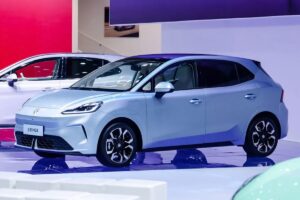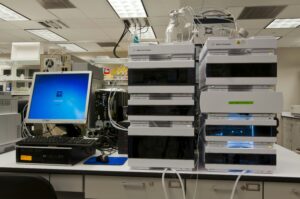
It’s the “transition technology” that isn’t going away. For years, sales of plug-in hybrid electric vehicles (PHEVs), which can burn fuel or run off a battery, were expected to decline as full-battery electric vehicles (BEVs) took their place. But in Australia, another story is unfolding. PHEV sales are booming.
One year ago, not a single PHEV ute had been sold anywhere in Australia. Today, there are more than 12,000 on the roads, and a PHEV is the fourth best-selling ute in the country. To some, PHEVs are a necessary “stepping stone” in the process of vehicle electrification, helping Australians get used to battery-powered cars. However, others argue PHEVs simply prolong the costly love affair with unnecessarily large cars, labeling them as “wolves in sheep’s clothing.”
Hybrid EVs versus Full-Battery EVs
The phrase electric vehicle (EV) may conjure images of 100 percent battery-powered cars, yet many EVs regularly burn fossil fuels. In just two years, PHEVs have become a common sight on Australian roads, with more than 60,000 sold.
Plug-in hybrids, or PHEVs, combine an internal combustion engine with an electric motor and a battery pack that can be charged from an external power source. They generally emit less CO2 than equivalent full-combustion vehicles but significantly more than BEVs when used over an extended period.
PHEVs now account for about a quarter of EVs sold, a significant increase from just a tenth of total EV sales two years ago.
Are Plug-In Hybrids Helping or Hindering Fully Electric Car Sales?
The popularity of PHEVs has defied predictions. “Amongst the EV community, we’re a little surprised,” says Ben Elliston, chair of the ACT branch of the Australian Electric Vehicle Association (AEVA). “PHEVs came out of nowhere in the last few years.”
Chris Jones, president of the AEVA, argues that PHEVs are undermining Australia’s emission reduction goals. “PHEVs were a transition technology … but now I think they’re a handbrake on BEV sales.”
However, others in the automotive industry see PHEVs as cracking a consumer segment not yet ready to go all-electric. “They’re a real stepping stone for people to ultimately move into a battery electric vehicle,” says Rohan Martin, CEO of the National Automotive Leasing and Salary Packaging Association (NALSPA).
Who’s Buying PHEVs?
Michael Formosa, whose company services and repairs garage doors and gates in Sydney, traded in four Ford Ranger diesel utes for four PHEV utes in December last year. Other than a few issues with battery range when towing, he’s happy with the decision, which has meant less spending on fuel.
“I worked out we’re doing about an eighth [of our traveling] in petrol and the rest in [battery power],” he says. “Without the [plug-in hybrid], I’d still be driving a petrol or diesel ute.”
Utes account for about 20 percent of all vehicles sold in Australia, making them a significant market segment. The only fully-electric ute available, the LDV eT60, has had performance problems and is more expensive than popular PHEV models.
Are PHEVs Good or Bad News for Emissions?
When burning fuel rather than running on battery power, PHEVs actually emit more than their full-combustion equivalents. They’re only low-emission options if drivers plug them in to recharge.
A recent European study found many PHEV drivers often don’t recharge, suggesting PHEVs may not be as clean as their rated emissions suggest.
Many plug-in hybrids have a battery range of more than 50km, which exceeds the average daily distance driven by Australians. However, PHEVs may only be about half as polluting as their full-combustion equivalents, similar to standard hybrids.
Are Plug-In Hybrids the Future or a Temporary Convenience?
Earlier this year, the federal government lifted a key tax exemption for PHEVs, effectively making them more expensive to own through a novated lease. Despite this, PHEV sales have slowed but not stalled.
Rather than shifting away from plug-ins, automotive brands are launching more PHEV models in the Australian market. The Toyota RAV4, a top-selling medium SUV, will come with a PHEV option from 2026. Meanwhile, BYD plans to launch several new PHEV and BEV models in the coming months.
The future of PHEVs partly depends on whether car companies can build a BEV ute that Australians want to buy. If successful, the rise of PHEVs may be temporary. However, improving battery technology suggests that BEVs are the future, with plug-ins playing a crucial role in the present.
“What we need is incentives to help people get into PHEV vehicles. We don’t have any at the moment,” says Aman Gaur from the EV Council. “How are we getting people off petrol utes and into electrified utes?”
Batteries may be the future of transport, but the road to electrification is a twisty one. The upstart plug-in hybrid shows no sign of disappearing just yet.







